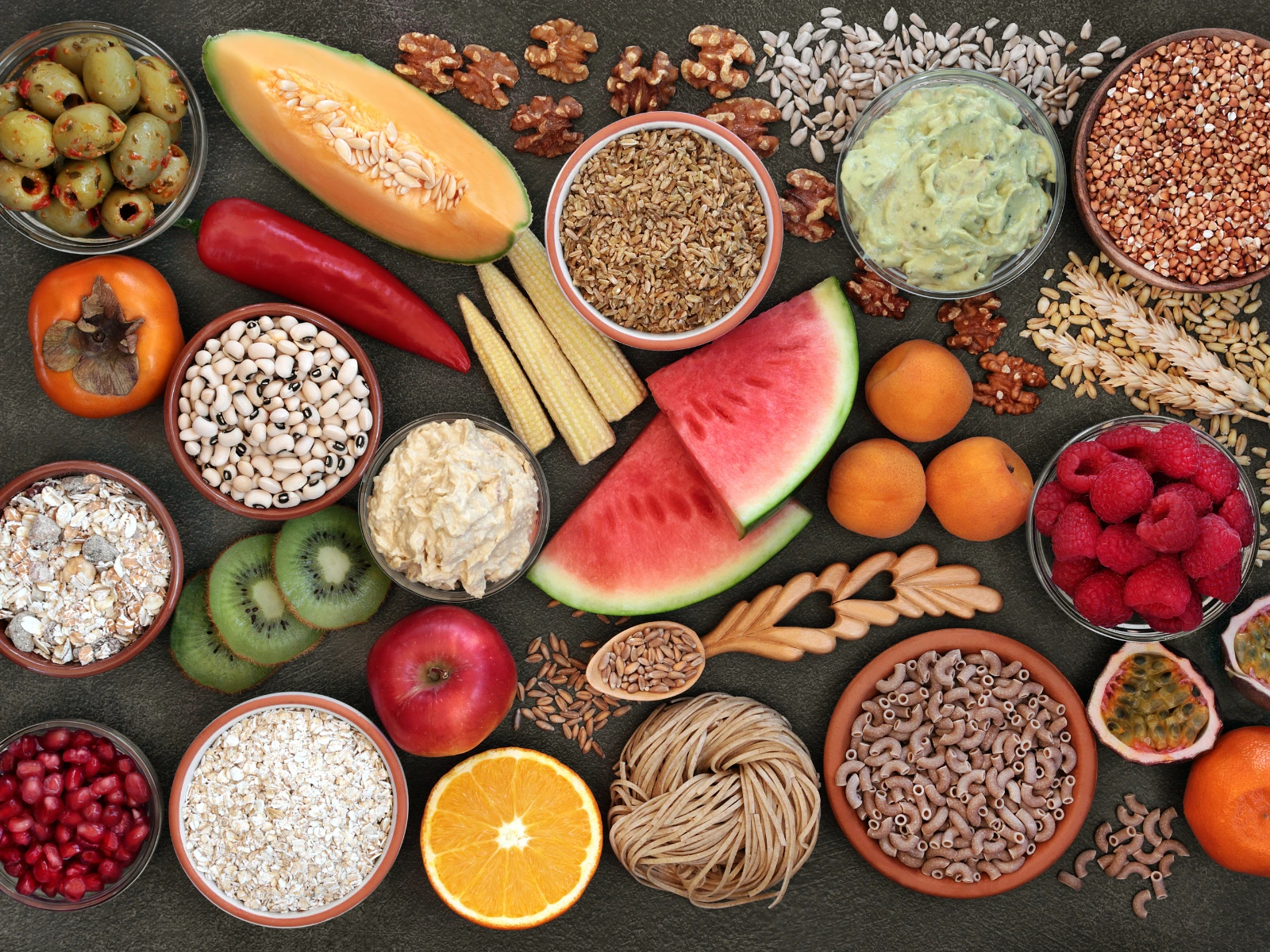BLACK FRIDAY IS HERE - UP TO 30% OFF
News
8 Minutes

Fibremaxxing: Why variety beats volume for a healthier gut
Learn how fibremaxxing - focusing on fibre quality and diversity - improves gut health, balance, and energy. Discover practical ways to feed your microbiome.
05/11/2025
Most people know fibre is good for them but few realise how much the type and variety of fibre matter just as much as the amount. “Fibremaxxing” is the science-backed approach to getting more from your diet by strategically improving both the quality and diversity of your fibre intake.
It’s not about adding endless spoonfuls of bran. It’s about creating a diet that feeds the full ecosystem of your gut microbiome - the trillions of bacteria that influence everything from digestion and inflammation to hormones and metabolic health.
What is fibremaxxing?
Fibremaxxing means increasing the quality and variety of dietary fibre to optimise gut health, blood sugar balance, and overall metabolic function.
The focus:
- Hitting 30–40 g of fibre per day, and
- Aiming for 30 + different plant foods per week.
This “30-plants challenge” has strong research backing; people who eat a broader range of plants tend to have more diverse and resilient gut microbiomes. Fibre diversity is key because different bacteria feed on different fibre types, producing a wider spectrum of beneficial compounds.
Why fibre variety matters
When your gut bacteria ferment dietary fibre, they produce short-chain fatty acids (SCFAs) such as butyrate, acetate, and propionate. These have wide-ranging benefits:
- Reduce inflammation: Butyrate strengthens the gut barrier and regulates immune activity, lowering the risk of “leaky gut” and systemic inflammation.
- Support digestion: Fibre increases stool bulk and regularity.
- Encourage microbial balance: Diverse fibres feed a wider range of beneficial species, preventing dominance of a few strains.
The ripple effects beyond the gut
Hormone balance
Fibre helps with oestrogen clearance, supports thyroid hormone conversion, and improves insulin sensitivity - three areas that underpin hormonal and metabolic stability.
Blood sugar control
Soluble fibre slows the breakdown of carbohydrates, reducing post-meal glucose spikes and helping maintain steady energy levels.
Heart and metabolic health
High-fibre diets are linked with lower LDL cholesterol, improved lipid metabolism, and reduced inflammatory markers such as hsCRP.
Satiety and weight regulation
Fibre adds bulk, delays digestion, and triggers fullness hormones - all of which naturally support appetite control and healthy body composition.
Types of fibre to include
|
Type |
Role |
Food sources |
|
Soluble |
Slows digestion and balances blood sugar |
Oats, apples, flaxseeds, legumes |
|
Insoluble |
Adds bulk and promotes regularity |
Whole grains, vegetables, nuts |
|
Prebiotic |
Feeds beneficial bacteria |
Garlic, onions, leeks, bananas, asparagus |
|
Resistant starch |
Promotes deep-colon fermentation and butyrate production |
Cooked-and-cooled potatoes, rice, green bananas |
Fast vs. slow fermenting fibres
- Fast-fermenting fibres (e.g., inulin, oats, legumes, apples) feed bacteria in the upper colon. They work quickly but can cause gas or bloating if overdone.
- Slow-fermenting fibres (e.g., corn, cassava, sweet potato, green bananas) reach the lower colon, where they sustain butyrate-producing bacteria and long-term gut resilience.
For a balanced microbiome, combine both. Lack of slow-fermenting fibres can reduce butyrate and weaken gut defence over time.
Gentle fibremaxxing for sensitive guts
If you’re wondering how to increase fibre without bloating or which fibres are best for IBS, the key is a gradual, low-FODMAP approach. People with IBS, IBD, or sensitive digestion often react to high-FODMAP foods like beans, onions, and apples. Rather than cutting fibre out, start with gentle sources such as oats, quinoa, chia seeds, kiwi, carrots, and cooked vegetables.
Increase intake slowly, keep hydrated, and reintroduce more fermentable fibres over time as your gut adapts. For personalised guidance, working with a registered dietitian or testing your microbiome with StrideBiome can help identify the fibre types your gut tolerates best.
Practical ways to start fibremaxxing
- Add chia, flax, or hemp seeds to breakfast.
- Include lentils, chickpeas, or beans at least three times a week.
- Swap white rice for quinoa or barley.
- Snack on fruit with skin, nuts, and raw veggies.
- Keep vegetable skins on when cooking.
- Drink plenty of water and add about 5 g extra fibre per day each week to avoid bloating.
- Variety beats perfection - aim for consistency, not extremes.
Turning data into action
Wondering how to test your gut health or which fibres really work for you? With StrideBiome, you can analyse your gut bacteria, see how diverse your microbiome is, and learn how well it produces beneficial compounds like butyrate.
To act on your results, GS-01 Gut Support delivers synbiotic bacteria that feed the same pathways your test measures - helping you maintain microbial balance and get more from your fibremaxxing routine.
The bottom line
Fibremaxxing isn’t a trend; it’s the foundation of long-term gut and metabolic health. Feed your microbes a wider menu, and they’ll return the favour through better digestion, stronger immunity, and steadier energy.






